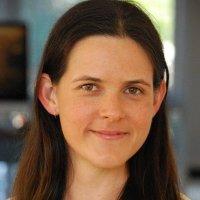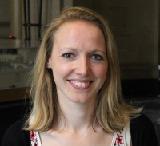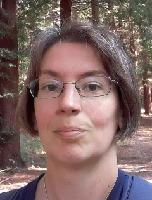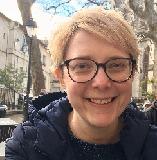Blog
Unless otherwise stated, content is shared under CC-BY-NC Licence
DCDC21: Transforming crisis into opportunity within the GLAMA sectors
Shalen Fu is a PhD researcher in Digital Heritage and Impact Studies at King's College London. Shalen attended DCDC 2021 with support from the DPC’s Career Development Fund, which is funded by DPC Supporters.
In 2018, I started my PhD journey at the Department of Digital Humanities, King’s College London (KCL). My research looks at how to best assess the impact of digital museum resources in China. Working with museum partners and the general public, I hope to develop an impact assessment framework that helps Chinese memory institutions better perverse their heritage resources, manage digital collections, and engage the audience.
KCL is one of the associated members of the DPC, which allowed me to participate in the Discovering Collections, Discovering Communities (DCDC) 21 Conference enabled through the DPC Career Development Fund. I would like to express my gratitude to the DPC for providing me with this excellent opportunity to learn from others while reflecting on how my research could best serve memory institutions in the context of uncertainties and changes.
The DCDC 21 Conference was held from 26 June – 2 July, which explored “how crisis can act as a catalyst for change within libraries, archives, museums, and cultural organisations”. The conference covered a wide range of topics from digital heritage preservation, accessible and inclusive catalogues, audience engagement to online teaching. Speakers from varied countries and backgrounds shared their viewpoints on the impact of the pandemic and how we could transform crisis into opportunity. This blog will focus on three talks regarding ‘digital loans’, trauma-informed practices in the GLAMA sectors, and digital game creation.
A long, arduous journey to the starting line
Alexandre Angers is Head of Sector for Long term preservation at the EU Publications Office.
I moved to the Publications Office about a year ago, joining the wonderful long-term preservation team.
This was my first foray into the world of digital archiving. I remember, for lack of a better reference, that in my mind came the image of a ‘time capsule’, probably from watching too many movies or television shows. I knew I was probably off, but had no idea how far off I was. First, of course, is maintenance – digital preservation is more akin to keeping a life form alive and healthy than storing objects away from the inclement weather. But more important, even, is how differently time capsules and digital preservation ‘successfully end’. I put both words in brackets because they deserve a reflection.
Exploring digital transfer via SharePoint
Laura Peaurt is Digital Preservation Officer at the University of Nottingham
Manuscripts & Special Collections have an active programme of collecting material supporting the institutional archives and documenting university life. This includes content created by the Students Union as well as student and staff societies.
We have an ongoing relationship with Student Union Officers, offering an annual induction to introduce officers to the archive service, and encourage deposit of material with the archive. We have previously blogged about this collecting work and our efforts to process CDs, DVDs and collect website relating to the student union.
Recruiting for digital preservation – one part of a bigger whole
Recently at the University of Melbourne we’ve had a chance to review an existing position description in our Digital Stewardship (Research) team, after the departure of a near and dear colleague.
We reviewed this position in light of new requirements coming out of our five-year journey to date implementing a digital preservation strategy for the university.
The position up for review played a crucial role in building the foundations for our digital assets repositories, and so now with technical foundations in place, the shift in this role reflects the maturity of service developments.
New digital preservation requirements emerging after five years of dedicated digital preservation strategy implementation (a non-exhaustive list!) means we have to:
-
Manage a digital preservation repository, including operational services to support the library, archives, and records units at the university
-
Support ongoing skill development for existing distributed staff having digital preservation functions added to their roles
-
Update and share our emerging digital preservation policies and procedures
-
Develop and share our operational framework and service model for doing digital preservation
-
Maintain existing relationships and invest in coordination for new relationship building to support the digital preservation repository across a very distributed staff cohort. Especially given the separation of IT and digital preservation functions in the organisation
-
Advocate for new capacity in terms of human infrastructure to support all of the above (as well as continue advocating for the technical infrastructure we have now put in place!)
It is very difficult to get an entire position dedicated to digital preservation, especially when our team does so many different tasks for the research and staff community across a range of areas – as well as digital preservation we support research data management and curation, open access, and data publishing to name some of the big ones.
Thus we’ve arrived at the need for a dedicated Digital Curation Technical Specialist as we’re calling it – we are seeking primarily a technical skill set that includes curation and digital preservation knowledge and understanding, as well as data repository and outputs workflows.
Take a look at what we’ve arrived at – I’d be very interested in comments or even a conversation with others grappling with how best to resource digital preservation requirements. And if you or someone you know would like to join a remarkably collaborative and supportive team, send this job advertisement out!
Starting out with EDRMS preservation: Selecting a preservation approach
Lorna Williams is Senior Archivist at the Bank of England
Background
The Bank of England is the UK's central bank. Its mission is to deliver monetary and financial stability for the people of the United Kingdom. The Bank has had an archive function for over 50 years and it is now one of the finest business archives in the country. The Archive holds nearly 100,000 items covering all aspects of the Bank’s history and operations since it was established in 1694. As well as meeting the internal needs of the business, the Archive is open to external researchers. Although the archives are not public records, the Bank opens material after 20 years in line with the policy of the UK National Archives.
Back to basics at IS&T Archiving 2021: Tailoring Quality Assurance Workflows to your Digitisation Project
Caroline Lebre is a Digitisation Technician at the Imperial War Museum (IWM) Duxford in England. She attended IS&T Archiving 2021 with support from the DPC’s Career Development Fund, which is funded by DPC Supporters.
I have recently started a position as a Digitisation Technician at the Imperial War Museum (IWM) Duxford in England, digitising the still media collection at the demand of the museum’s clients for various projects. As a recent graduate starting my career in the sector, I applied for a DPC Career Development Fund grant to attend the IS&T Archiving 2021 conference to learn about the ongoing research and debates on digitisation and curation and understand the different practices implemented by cultural heritage institutions. However, I was worried that the conference was intended for experts and professionals with several years of experience in the sector and I would not be able to understand the content discussed during the talks. I was very happy to discover that the Technical Papers Program offered a wide range of talks aimed at practitioners from all backgrounds and experience levels and that instructors were always keen on answering all questions. If you are currently involved in your first digitisation project, this conference will be a great platform for you to learn without barriers, just as it was for me.
When Ireland said ‘Yes’: digitally-preserving the campaign to Repeal the Eighth Amendment
Dr Lorraine Grimes is a Postdoctoral Researcher and Digital Archivist for the Digital Repository of Ireland
The Archiving Reproductive Health Project aims to provide long-term preservation and access to the many at-risk archives generated by grassroots women’s reproductive health movements during the campaign to Repeal the Eighth Amendment to the Irish Constitution. The project will collect, catalogue and preserve in the Digital Repository of Ireland much of the born-digital content generated by grassroots organisations such as Terminations for Medical Reasons, Together for Yes, Coalition to Repeal the 8th and the Abortion Rights Campaign. It will also preserve digitally-born material, particularly the In Her Shoes Facebook page.
Living with Legacies (Part 2)
In my previous post I set out the context for addressing legacy material held by The Postal Museum. I outlined how I approached the issue of getting content off removable media and work to analysis the file formats. In this post I explain how I am using this experience to plan migration pathways for inaccessible formats, and applying this experience to other material in our collections.
Doing digital - putting theory in to practice (part three)
Beth Astridge (Project Archivist, UKPA) and Clair Waller (Digital Archivist), University of Kent Special Collections and Archives.
Contemporary collecting and mapping other collections
This is our final blog post in a series from the University of Kent Special Collections & Archives describing some of our ongoing work to implement robust workflow and processes for the acquisition and management of born digital records, driven by our work to establish the UK Philanthropy Archive.
Digital Developments in the University of Liverpool’s Special Collections & Archives’
Jenny Higham is Head of Special Collections & Archives at the University of Liverpool Library
Amongst many significant changes – including a long period of reading room closure and limited staff access to collections - one lasting impact of Covid-19 on the University of Liverpool’s Special Collections & Archives has been an accelerated transition to delivering more of our service digitally. Unlike some of the other changes, this one is likely to remain permanent as the organisation moves forward with a proposed model of hybrid working.






















































































































































